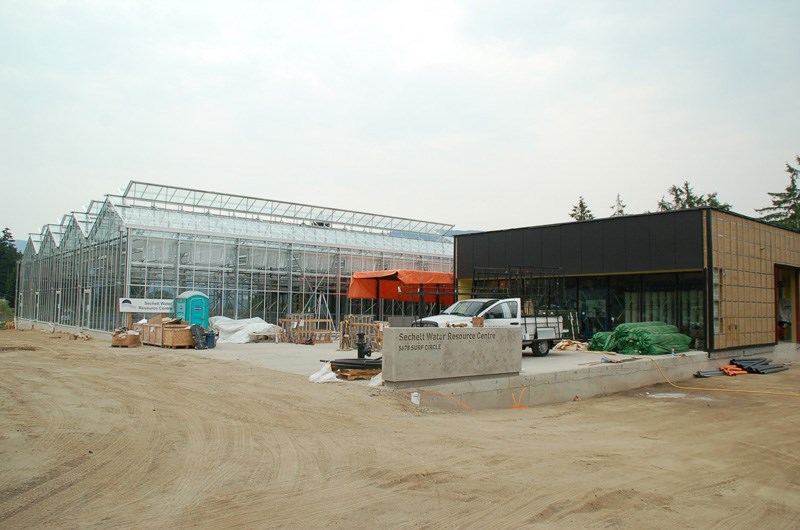Sechelt is seeking three more credits to achieve gold Leadership in Energy and Environmental Design (LEED) status for its new wastewater treatment plant, but to get them, the District will have to use up most of the $162,000 left in its contingency fund.
Originally, the District planned to use bus service to the treatment plant as a way to get the LEED credits necessary, but project coordinator Paul Nash said the District missed some fine print.
“On further micro reading of the criteria, there’s two lines where it requires ‘and frequent service,’” Nash told council during their Aug. 13 committee of the whole meeting. “So it turned out actually we can’t get that credit, which is just one of the many annoying things about the LEED system. Effectively no small community can get that credit because no small communities can have two different [bus] lines doing frequent service in the same area, so that’s very unfortunate.”
Instead he pitched a solar panel project for the roof of the new treatment plant, estimated to cost about $100,000.
Another option, to spend about $90,000 to get the credits through a “measurement and verification of energy use” report, was deemed less desirable by Nash.
“Other than the LEED points, there is very little real value to the District from this money,” he wrote in his report to council Aug. 13, noting the solar panel option provides “not only LEED points, but actual cost savings from electricity offset.”
However, the $100,000 cost of the solar panels would leave just $62,000 in the contingency fund for the wastewater treatment plant, which is yet to be completed.
The project’s management company, MHPM, expressed concern about the potential for insufficient reserves outlined in Nash’s report.
The company noted that Sechelt’s previous move to reclaim water at the site and the plan to install solar panels “were not part of the original project’s scope.”
So far $147,000 has been spent (from the contingency) on the reclaimed water system council added to the build earlier this year.
In an effort to get the needed LEED credits but not deplete the contingency, Nash suggested paying the $147,000 bill for the reclaimed water system from Sechelt’s reserves, effectively reimbursing the contingency fund. The change would leave the contingency sitting at $209,000 after the $100,000 solar panel project was paid for.
Mayor John Henderson noted the $147,000 would be made a “differed expense” and pushed into the 2015 budget.
When the question was called, all of council was in favour of moving forward with the $100,000 solar panel project and differing the reclaimed water expense.
The decision was made in committee so it will have to come back to a regular council meeting for ratification.
Work on Sechelt’s new wastewater treatment plant started in June of 2013 and is expected to wrap up this October.
“We are into the homestretch. The exterior should be completed over the next month, maybe a little bit longer. That will be a weather dependent operation. The retaining walls are nearing completion,” Nash said, noting “pretty much everything that has to be built has been built.”
“The schedule for the first water [being accepted at the plant] is for the 30th of October or thereabouts. And fully operational, meaning to take all of the flow and have Dusty Road on standby, is currently scheduled for a couple of weeks later. That date might float. And the completion date, substantial completion of the contract and of the 30-day commissioning period, should be the middle of December.”



